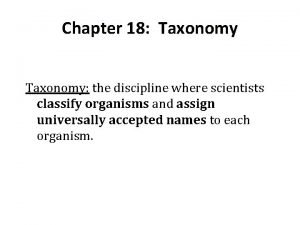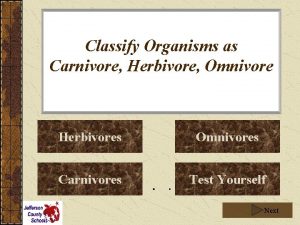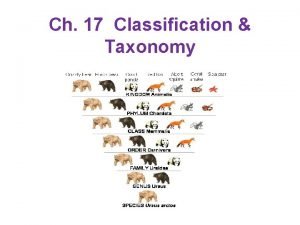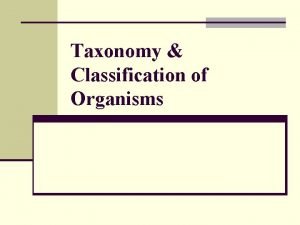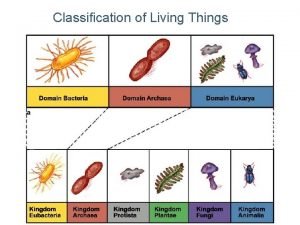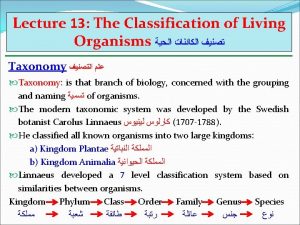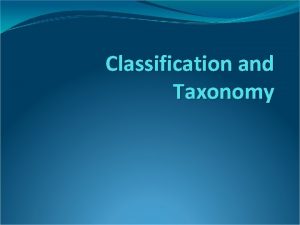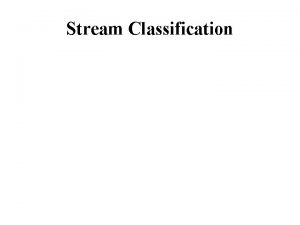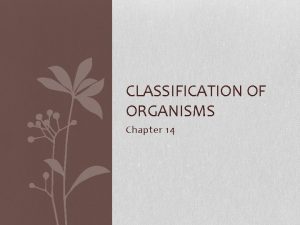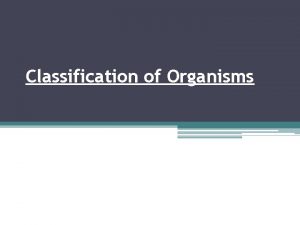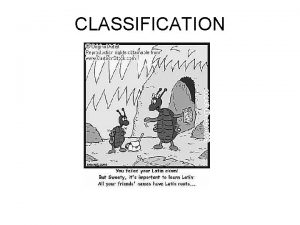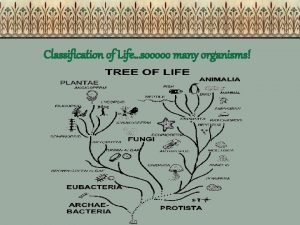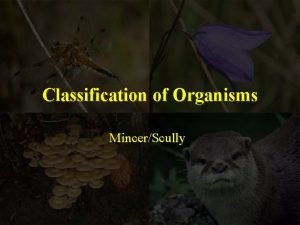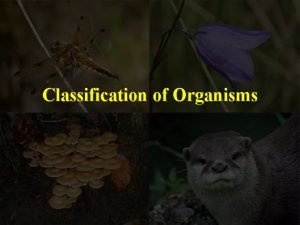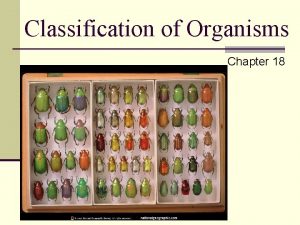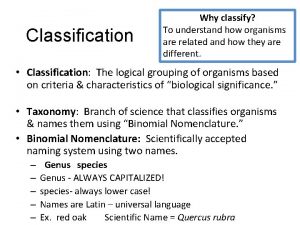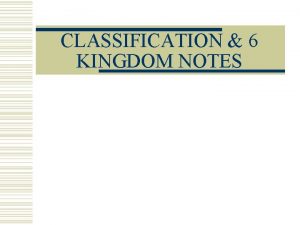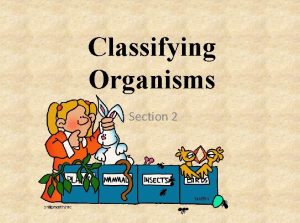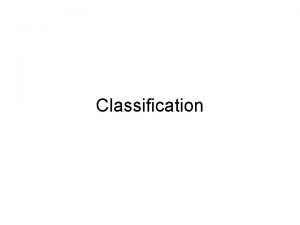Classification of Organisms Why Classify To study the
















- Slides: 16

Classification of Organisms • Why Classify? • To study the great diversity of life, organisms must be divided into manageable groups. The system must have 2 important features:

• Universally accepted – everyone can interpreted • Place organisms in groups that make biological sense – insects vs. fishes

• Early scientific names were very long and descriptive (20 or more words) • Swedish botanist, Carolus Linnaeus, developed a system still use today – binomial nomenclature • Each organism have a 2 part scientific name Genus: Acer Species: Rubrum RED MAPLE

The science of naming organisms and assigning them to groups is called taxonomy.

• Kingdom: Animalia • Phylum: Chordata (they share a spine and nervous system) • Class: mammalia (warm-blooded, hair, produce milk) • Order: Carnivora (meat-eaters) • Family: Ursidae (bears) • Genus: Ursus • Species: arctos (Brown bear)

Human (Homo sapiens) • Kingdom Animalia • Phylum Chordata • Class Mammalia • Order Primates • Family Hominidae • Genus Homo • Species sapiens

Fruit Fly (Drosophila melanogaster) • Kingdom Animalia • Phylum Arthropoda • Class Insecta • Order Diptera • Family Drosophilidae • Genus Drosophila • Species melanogaster

• Several acronym mnemonics have been made for these: • King Phillip called out for good soup • Kings Play Chess On Funny Green Squares

Phylogenetic Trees -- Classification lists the unique characters of each taxon and is ideally designed to reflect phylogeny —the evolutionary history of a group of organisms. • Phylogenetic tree is a diagram that indicates common ancestors and lines of descent.

Phylogenetic Trees • A primitive character is present in the common ancestor and in all members of a group.

Classification and Phylogeny

Table 22. 1 Molecular Data and the Evolutionary Relationships of Vertebrates Mader: Biology 8 th Ed.

Biochemical Differences

Traditional versus Cladistic View

Constructing a Cladogram

Constructing a Cladogram
 The scientific discipline of classifying organisms
The scientific discipline of classifying organisms Why do scientists classify
Why do scientists classify Why do organisms interact with other organisms
Why do organisms interact with other organisms Hey bye bye
Hey bye bye Classify the organisms as herbivore or carnivore.
Classify the organisms as herbivore or carnivore. Classification groups in order
Classification groups in order Carolus linnaeus
Carolus linnaeus How do scientists classify organisms
How do scientists classify organisms Unicellular and multicellular organisms
Unicellular and multicellular organisms Dont ask
Dont ask The 8 levels of classification
The 8 levels of classification Why isn't it a good idea to classify matter by its phases
Why isn't it a good idea to classify matter by its phases Protistq
Protistq Human domain and kingdom
Human domain and kingdom Most general to most specific classification
Most general to most specific classification Binomial nomenclature consists of two names *
Binomial nomenclature consists of two names * Prenucleus
Prenucleus
